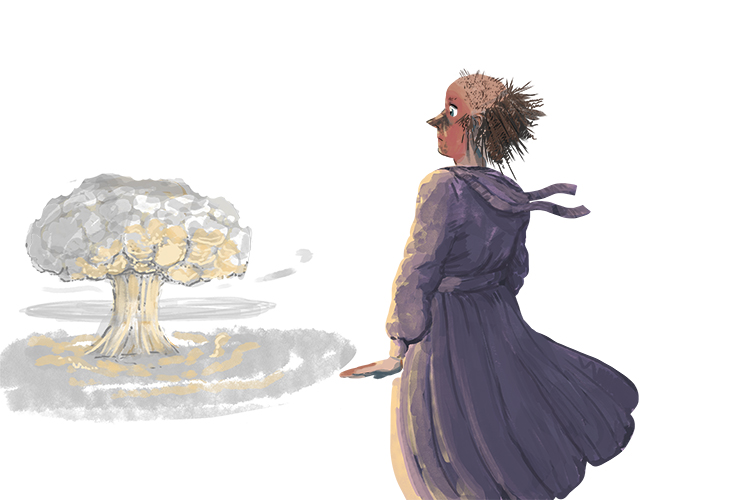Arthur Harris – Air Marshal who was commander-in-chief of RAF Bomber Command in World War II, known as "Bomber Harris"

Half her hair is (Arthur Harris) blown off by a bomber.
Arthur Harris, known as "Bomber Harris", became commander-in-chief of Britain's Bomber Command in 1942. Bomber Command controlled the RAF's bombing of enemy cities and military and industrial targets throughout World War II.
Harris developed the saturation technique of mass bombing, which involved concentrating large numbers of bombers in giant raids on single cities. The object was to completely demolish civilian areas in the belief that this would destroy Germany's will to fight.
While the Americans conducted precision bombing of military and industrial targets, Britain's saturation bombing destroyed large part of many cities, notably Hamburg and Dresden.
Bomber Command suffered a very high casualty rate, with 55,573 British airmen killed out of a total of 125,000 aircrew – a 44.4 per cent death rate.
The morality and effectiveness of saturation bombing came under question towards the end of the war, and long after it.
Arthur Harris had previously served as a pilot in World War I. Between the wars he continued his service in various countries and earned a number of promotions in both the RAF and the Air Ministry. He was made an air commodore in 1937, air vice-marshal in 1939 and rose to air marshal in 1941. It was in February 1942 that he became commander-in-chief of Bomber Command. He earned respect from his subordinates and enormous loyalty from his bomber crews.
After World War II, Arthur Harris retired from the RAF and started a successful business career in South Africa. He later returned to Britain and was made a baronet.
He died in 1984, eight days before his 92nd birthday.
Interesting fact: A statue of Arthur Harris erected outside the RAF Church of St Clement Danes, in central London, had to be kept under 24-hour guard for several months as it was damaged by protesters, some of whom claimed Harris had been "a war criminal". Queen Elizabeth the Queen Mother had been jeered when she unveiled the statue, commissioned by the Bomber Harris Trust, in 1992.




